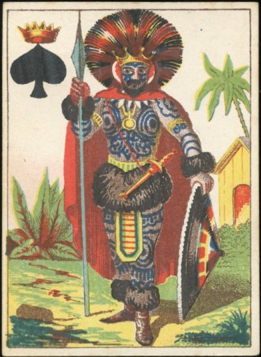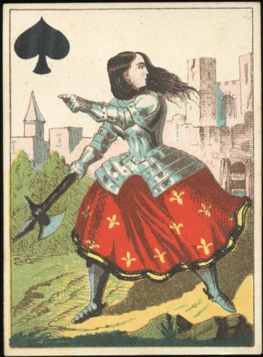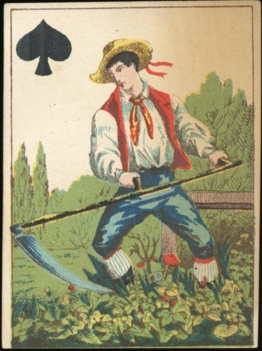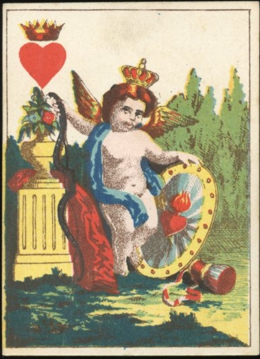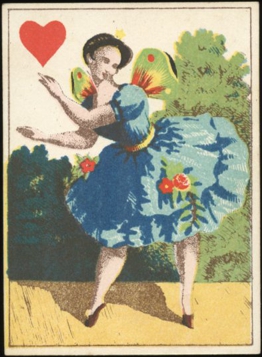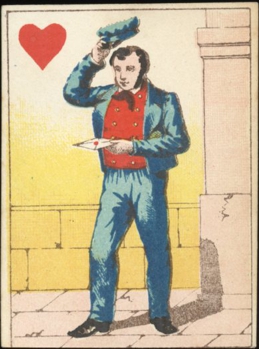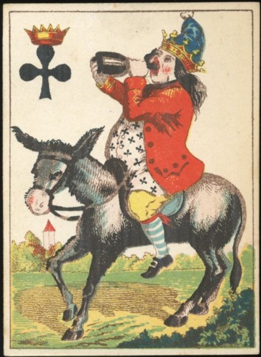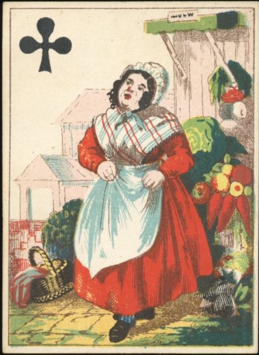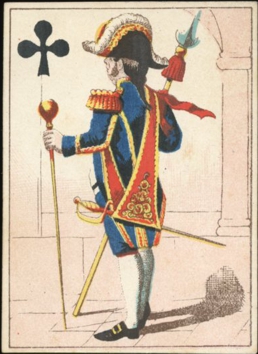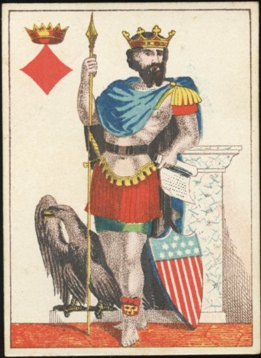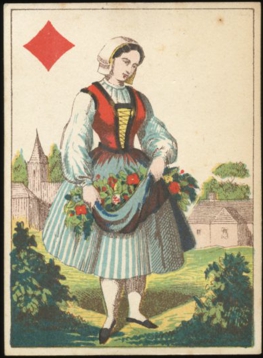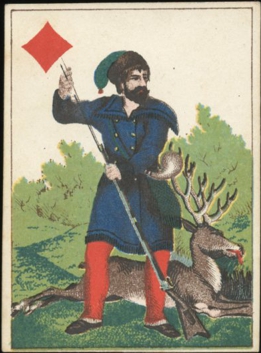February
2023
|
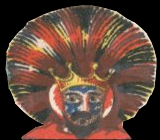
|
This is
probably the most remarkable king in the pack and it will remind most
collectors immediately of the transformation deck by Grimaud, known as Jeanne
Hachette. However, this deck was printed and published in Germany. This
Jeanne Hachette is usually dated as c1865, which makes it somewhat
contemporary with the Grimaud deck, which was made since the 1850's.
|
|
Both decks are named after
the queen of spades, which shows the figure of Jeanne Hachette with the
city of Bauvais in the background. It refers to the heroic act of a woman
during the siege of Bauvais by the troops of the Duke of Burgundy. The
woman was the daughter of a peasant and known as Jeanne Fourquet. Her
nickname was Jeanne Hachette (Joan the Hadget). Here she's depicted in
armour, but in real she had fought in plain clothes. The heroic act was
that she, ax in hand, seized a flag that had been planted in one of the
battlements by a Burgundy soldier and had hurled him into the moat. That
action uplifted the spirit of the defenders of Bauvais. |
This
deck was printed and published by Maximilian Frommann (1813 - 1866) from
Darmstadt, Germany, around 1865. He had founded a print shop there in 1835. His
initials can be found on the 8 of diamonds.
Nine of the 12 courts have the same images as those from the Grimaud deck,
although the jack of spades has changed place with the jack of clubs. The
diamond courts are completely different and original designs. The ace of clubs
has the same design as in the Grimaud deck, but the aces of spades and diamonds
were copied from another transformation deck: the Braun & Schneider deck
from c1852. Many designs of the pip cards can be traced back to the
Grimaud and Braun&Schneider decks too, but there are a number of original designs
to be found too. If you want compare these decks for yourself, both are shown
elsewhere on this site. Here are links to Grimaud
deck and the Braun
& Schneider deck. But for now:
ENJOY.....
and don't forget to click the aces.
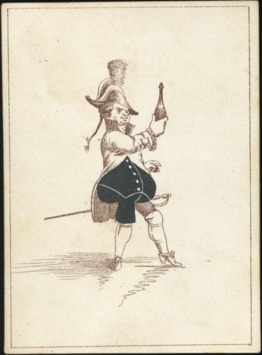 |
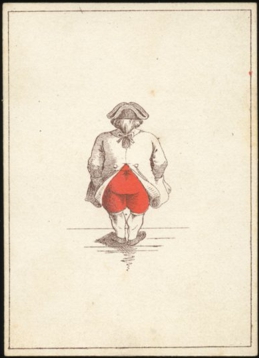 |
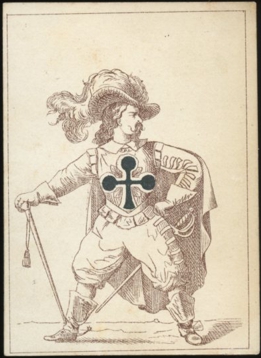 |
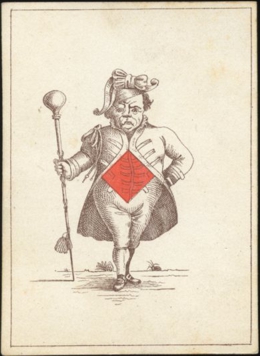
|
| CLICK
THE ACE TO SEE THE PIP CARDS OF THAT SUIT |
The deck consists of
52 cards.
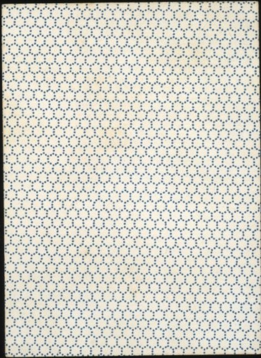
BACK TO PRESENT MONTH

